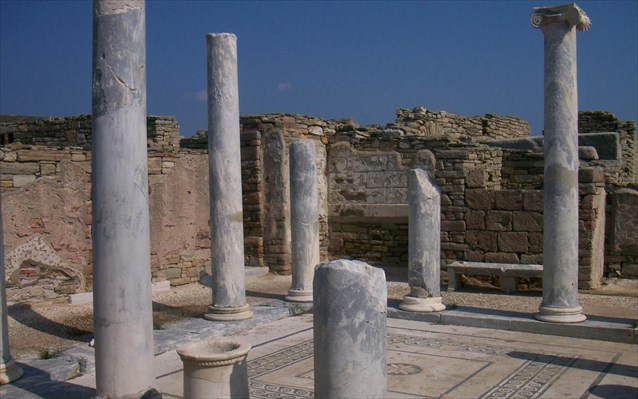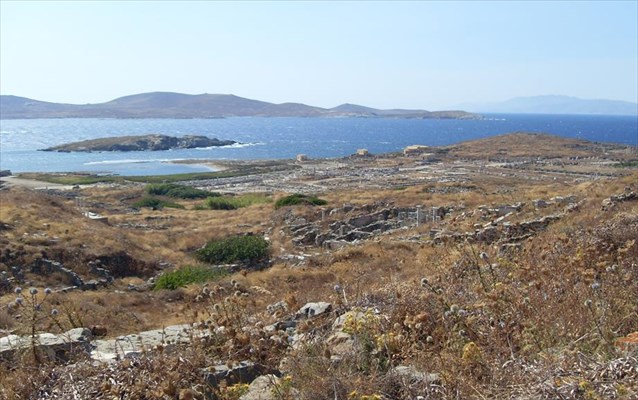The road of lions, photos: www.naftemporiki.gr
The Central Archaeological Council (KAS) will lay down the general rules for the creation of a new museum on Delos Island.
According to the instructions, a major part of the new museum will lie underground or in caves, in line with the rules of bioclimatic architecture. It will be situated at the furthest possible point from the sea for better protection of its antique exhibits as well as for economising on repairs.
The museum's area will be at least 5000 m², which will enable it to put on display all exhibits from the existing museum as well as a multitude of objects, which are currently still in storage.
The funding will come from the International Foundation for Greece (founded in London by George and Aspasia Leventis). Last summer, the foundation offered funding to the Greek government for an archaeological research project and suggested Delos was the best option.

A World Heritage Site since 1990
The rocky island of Delos, 5 km long and 1.3 km wide, was a sacred place in antiquity. Apollo and Artemis, two of the most important deities of the Greek pantheon, were born here. It is located at the centre of the Cycladic archipelago, and at the heart of the Aegean Sea. The other islands of the archipelago form a circle around Delos. The ancient Greek poet Callimachus of Cyrene (3rd century BC) called it the ‘hearth of the islands’, i.e. the shrine and hub of the Cyclades.
The island’s ancient inhabitants built oval huts atop mount Kintos (113 m) around 2500 BC. Back in those uncertain times, they could easily keep an eye on the little valley and the surrounding seas from up there. Apollo’s sanctuary, in existence since Homer’s era, reached its greatest prosperity during the archaic (7-6 century BC) and classical (5-4 century BC) eras.
People from all over the contemporary Greek world came to the island to worship the sun god Apollo and his twin sister Artemis, the goddess of the Moon. The remains, which visitors can see today, are from the town that flourished in the course of a few decades after 166 BC. Once the Romans turned the port into a duty-free zone, the small island quickly became the most important commercial hub of the Greek world.

A view of the archaeological site
It is believed, that the island harboured about 30,000 inhabitants in the early 1st century BC, and 750,000 t of goods went through its ports every year. Delos’ wealth and its warm relations with Rome however became the key reason for its downfall. It was assaulted and plundered twice: in 88 BC, by the Pontic king Mithridates, who waged war with the Romans, and in 69 BC by the pirates of Athenodor, an ally of Mithridates. After then, the island began to decline and was gradually abandoned by its inhabitants.
Excavation works began in 1872 and are still underway. A large sanctuary was found as well as a substantial part of the cosmopolitan Hellenistic city.